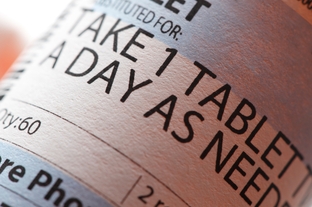Pharmacists Push Transparency in Medicaid Pricing
As a business owner, would you sign a contract that requires you to purchase a product, give that product away and then request payment from a third party without knowing how much you’d receive? What if you also didn’t know how much you’d be reimbursed before signing the contract, and that the other party could change that reimbursement rates without notice?
That’s the situation facing Texas pharmacists participating in Medicaid managed care.
“The lack of transparency there makes it very difficult for an independent pharmacist to find out what they’re going to be reimbursed,” said state Sen. Charles Schwertner, R-Georgetown, a surgeon and fourth-generation pharmacist.
With his help, the Texas Pharmacy Business Council and other pharmacy associations negotiated a deal this session to enhance transparency on how Medicaid health plans determine pharmaceutical reimbursements.
“The ongoing challenges from the movement to Medicaid managed care still linger, but I think we’ve got plenty to celebrate from this legislative session,” said Michael Wright, executive director of the Texas Pharmacy Business Council, which represents more than 1,100 pharmacies. “The art of negotiations in the session were in full bloom.”
Under Medicaid managed care, the state contracts with health plans to cover Medicaid beneficiaries’ health services, and in turn the health plans contract with pharmacy benefit managers to handle pharmacy benefits covered by the plan. The drug payments determined by the PBMs come in two parts: The pharmacist is reimbursed the “maximum allowable cost” for the ingredients in the drug and is also paid a dispensing fee.
The average dispensing fee for Medicaid prescriptions dropped from $7.13 to $1.53 when the state expanded managed care statewide in March 2012. In the first month, pharmacists received $12.7 million less in dispensing fees than they would have under the previous system.
That put tremendous pressure on pharmacists — particularly those running small businesses that primarily serve Medicaid clients — and makes it nearly impossible to turn profits or break even on the reimbursements for ingredient costs.
If pharmacists accept multiple health plans, they often have to stock a wide range of medications, as each offers reimbursements for different drugs. The prices pharmacists pay to stock those medications isn’t a factor in the ingredient reimbursements determined by the PBMs. And the PBM can constantly re-evaluate the ingredient costs, so if the ingredient cost changes or the PBM determines that a medication costs less than the pharmacist paid, the pharmacist is out of luck.
Schwertner’s Senate Bill 1106 would create some consistency in the companies’ lists of reimbursable drugs by requiring them to use drugs rated “A” or “B” by the federal Food and Drug Administration, and enhance transparency by requiring the companies to provide pharmacists information about the sources that were used to determine the ingredient costs for drugs. To ensure pharmacists aren’t caught off guard by price changes, the companies are also required to update those lists at least once a week. Pharmacists will also be able to challenge a drug price under the new rules, and the companies will be required to respond within 15 days.
“The significance is in the pharmacies having more knowledge to be able to react to pricing changes,” Wright said.
The bill takes effect Sept. 1. In a memo to the state health department's Medical Advisory Committee, which met Thursday to discuss rules to implement the provisions in SB 1106, Andy Vasquez, deputy director of the Medicaid and CHIP vendor drug program, wrote that there could be costs associated with the measures.
“However, HHSC has no data to calculate the cost for S.B. 1106 because the agency lacks data on maximum allowable costs for each MCO,” the memo states. An agency representative later clarified that the state does not anticipate any costs to implement the changes.
Even with the passage of SB 1106, independent pharmacists did not get everything they asked for this session.
Each PBM has multiple “MAC” lists used to reimburse the ingredient costs, which means pharmacists don’t know if they’re being paid the same rates at their neighboring competitors. Some independent pharmacists have alleged that one of the PBMs contracted by the health plans — CVS Caremark — has used different “MAC” lists to give CVS pharmacies a competitive advantage.
CVS Caremark strongly denies the allegations.
“With regards to reimbursement rates for Medicaid, CVS Caremark reimburses our participating network pharmacies at competitive rates that balance the need to fairly compensate pharmacies while providing a cost-effective benefit to our client plan,” Christine Kramer, a spokeswoman for the company, said in an email.
State Rep. Doug Miller, R-New Braunfels, offered a measure this session to require the PBMs to report each quarter the number of different drug lists used, the number of providers reimbursed according to each list and the average prices for the 100 most commonly prescribed drugs.
Although the House approved Miller’s measure as an amendment to SB 1106, it was taken off in conference committee. The pharmacy groups that had negotiated the original deal in SB 1106 feared the PBMs and managed care organizations would put pressure on the governor to veto the whole thing if the amendment was included. It also carried a significant fiscal note detailing the added costs associated with the change.
While there's still room for improvement, Schwertner said the state shouldn’t outlaw business relationships, such as the one between CVS Caremark and managed care organizations. In the future, he said, the state could “dictate some of the rules and regulations of how these PBMs operate,” such as regulating which drugs may be reimbursed and how those prices may be determined.


